On a warm summer evening in Detroit, families often gather around the James Scott Memorial Fountain on Belle Isle, watching its graceful water jets dance against the skyline. Children squeal with delight as mist from the historic Belle Isle fountain catches the golden sunset light, and couples pose for photos with the iconic marble tiers in the background. For generations of Detroiters, this Belle Isle fountain has been more than a decorative centerpiece – it’s part of our collective memory and a source of city pride. Now, after 100 years of operation, Detroit’s beloved fountain is about to get a massive lifeline. In a move celebrated by the community, authorities have announced a $6 million restoration project to ensure the fountain can continue enchanting visitors for the next century. This article dives into everything you need to know about the upcoming renovation: the timeline, the improvements planned, the history behind the fountain, and what it all means for Detroit and its parks.
 Belle Isle Park - Michigan, Facebook
Belle Isle Park - Michigan, Facebook
Belle Isle Fountain to Close for a Major Renovation (Timeline and Details)
After a century of continuous (and sometimes challenging) operation, the James Scott Memorial Fountain will undergo a comprehensive restoration starting in the summer of 2025. Officials have confirmed an 18-month renovation timeline for the project, during which the fountain and its immediate surroundings will be off-limits to the public. Construction fencing is slated to go up by mid-May 2025, marking the beginning of the fountain’s temporary closure. If all goes according to plan, the fountain is expected to be up and running again by May 2027 – just in time to kick off the summer season that year.
During the restoration, visitors to Belle Isle Park will notice that the fountain plaza, adjacent sidewalk, and Fountain Drive are closed through 2026. This means that for about two summers, Detroiters won’t be able to stroll right up to the fountain or enjoy its cooling spray. It’s a significant hiatus for a feature that has reliably delighted park-goers each warm season. However, officials stress that this temporary inconvenience is necessary to preserve public safety and to safeguard the fountain’s future. In fact, recent structural assessments made it clear that without intervention, the fountain’s aging infrastructure could fail, which might result in permanent loss of the monument – an outcome no one wants to imagine.
To help put the timeline in perspective, here’s a quick breakdown of what to expect:
- Spring 2025: Fencing is installed and the fountain’s water display is turned off as preparatory work begins. Locals were even encouraged to snap final photos in the days before closure, knowing it will be a while until the fountain flows again.
- Summer 2025: Full construction and restoration work commences under the supervision of the Michigan Department of Natural Resources (DNR). Heavy equipment moves in to start the delicate task of repairing the fountain’s foundation and plumbing.
- All of 2026: The site remains an active construction zone. The fountain’s basin and surrounding area stay closed as crews carry out structural reinforcements and upgrades (detailed in the next section). Belle Isle Park itself will remain open, but visitors will have to admire the fountain from afar this year.
- Spring 2027: Restoration is completed around late spring. The DNR has announced that the James Scott Fountain will be turned on again in May 2027, heralding a new chapter for this Detroit landmark just as warmer weather returns.
This timeline means Detroit will go roughly two years without the fountain’s presence in everyday park life. While that’s a considerable stretch, the consensus is that it’s well worth it. Park authorities and community leaders are committed to doing the job right so that the fountain doesn’t just return, but comes back better and stronger than ever – ready to serve Detroit’s Belle Isle for another hundred years.
What $6 Million Will Fix: Renovation Scope and Upgrades
The restoration project isn’t just a cosmetic touch-up; it’s a top-to-bottom rehabilitation addressing critical structural and mechanical issues that have been mounting over decades. The budget of $6 million will fund essential repairs and upgrades aimed at ensuring the fountain’s long-term functionality and safety. Here’s what the renovation entails:
- Structural Reinforcement: Crews will install new concrete support beams beneath the fountain. These beams are crucial to shore up the basin’s structural integrity, effectively strengthening the foundation that holds up the massive marble bowls and statuary. Inspections revealed that the base of the fountain has been gradually disintegrating after a century of wear and tear. Without reinforcement, there was a risk that the heavy upper tiers could eventually collapse into the lower bowl – a scenario the restoration is designed to prevent. “When that bowl is structurally unsound, it could collapse… you could potentially lose the entire fountain,” explained Thomas Bissett, the DNR’s Urban District Supervisor, underscoring the importance of the structural fixes.
- Plumbing and Mechanical Overhaul: Another major focus is replacing the fountain’s original 1920s-era plumbing and pumping system. The network of pipes and pumps that circulate water through the fountain’s cascades has been in place since the fountain first opened in 1925. Not surprisingly, after 100 years those components are heavily corroded and increasingly prone to leaks and failures. In the bowels of the fountain’s underground mechanical room, rusted valves and pipes currently drip water, even threatening electrical systems with moisture. All of this will be updated with modern materials. By installing new plumbing, the crew will ensure water can flow efficiently through the fountain’s 109 outlets (more on those later) without seepage. The improved infrastructure will also make maintenance easier and reduce water waste from leaks.
- Waterproofing and Basin Repairs: To tackle long-standing leakage issues, the project includes creating a watertight seal around the fountain’s lower bowl and basin. Right now, water has been infiltrating the subgrade mechanical room whenever the fountain runs, seeping through cracks in the basin. This not only causes the aforementioned puddles and mud below, but threatens the stability of the entire structure. The renovation will likely involve applying special sealants and possibly installing new drainage or lining systems to keep the water where it belongs – in the fountain. In addition, some of the marble elements encircling the lower bowl will be repaired or replaced as needed. This means broken or weather-worn sections of the carved stone might be swapped out for fresh marble, ensuring the fountain retains its ornate beauty while no longer leaking at the seams.
- Lighting and Electrical Upgrades: Fans of the fountain’s evening light displays will be happy to hear that improved lighting is part of the plan. The fountain’s current lighting system is outdated – in fact, it was using old incandescent bulbs submerged in the water, a setup that was both unsafe and inefficient by today’s standards. During the renovation, the DNR will modernize the fountain’s lighting by installing energy-efficient LED lights throughout the fountain’s bowls. These LEDs will shine brighter and can cycle through colors to illuminate the fountain dramatically at night, all while being far more reliable and easier to maintain. Upgrading the electrical wiring and controls will make those dusk light shows safer to operate and more spectacular to view. By the time the fountain reopens, visitors can expect a brilliant nightly glow from the refreshed fountain, likely even better than before.
- General Restoration and Aesthetic Improvements: While structural and mechanical fixes are the priority, the project will also address aesthetic restoration where possible. Decades of Detroit weather have left their mark in the form of stains, mineral deposits, and minor cracks. We can anticipate a thorough cleaning of the fountain’s Vermont white marble surface to restore its original luster. Any damaged sculptures or carvings may be carefully repaired. In past restorations, specialists even restored the fountain’s original sculptures of dolphins, turtles, and lion heads that serve as water spouts – this project will ensure those remain in top shape too. The result will be a fountain that not only works better internally but also looks as magnificent as it did when new.
Project leaders have emphasized that these upgrades are crucial for preserving the fountain’s legacy. Two years ago, engineers took core samples of the fountain’s concrete and confirmed what many suspected: the steel reinforcement and concrete were deteriorating, and intervention could not be put off much longer. With that evidence in hand, the DNR was determined to act swiftly. “Although the project will have an impact on visitors, we’re grateful that ARPA dollars were available... to strengthen and protect [the] fountain for future generations,” Bissett said, referring to the funding source enabling this renovation. In short, this $6 million renovation is tackling both the visible and hidden issues that have accompanied the fountain’s age, effectively future-proofing Detroit’s favorite fountain. By late 2026, when construction wraps up, the James Scott Fountain should be structurally sound, leak-free, and shining bright – ready to welcome visitors well into the 21st century.
.png) Belle Isle Park - Michigan, Facebook
Belle Isle Park - Michigan, Facebook
Funding the Future: American Rescue Plan Boost for Detroit Park Upgrades
One big question locals have is “Where is the money coming from for this large-scale project?” The answer is a heartening example of federal relief funds being put to work for community benefit. The $6 million fountain renovation is being funded through the American Rescue Plan (ARP) – specifically, a portion of relief funds allocated to improve parks and public spaces in Michigan. In 2021, as part of pandemic recovery efforts, the federal ARP provided a windfall to states and municipalities to help tackle long-standing infrastructure needs, among other things. Michigan’s leadership, under Governor Gretchen Whitmer’s Building Michigan Together Plan, earmarked a significant chunk of its ARP dollars for state parks and outdoor recreation. In fact, the Michigan DNR received $273 million in ARP funds to address a “decades-long backlog” of park infrastructure projects statewide.
The Belle Isle fountain restoration is one of the marquee projects to be financed from this pot of money. In the DNR’s own words, “This investment, made possible by American Rescue Plan funds, will ensure the long-term preservation of an iconic feature in Belle Isle Park.” Without the ARP boost, finding $6 million in the budget for a fountain – even a very important fountain – might have been difficult amid competing needs. Detroit’s city finances have improved in recent years but are still recovering from past challenges, and large capital improvements in parks often require special funding sources or philanthropy. The ARP funding effectively fast-tracked the fountain project and removed a huge burden from local authorities and nonprofits.
It’s worth noting that maintaining the James Scott Fountain has been a costly endeavor historically, and funding hasn’t always been readily available. During Detroit’s financial struggles in the late 20th century, the fountain frequently fell into disrepair. It even sat dry for years in the 1970s when the city couldn’t afford to run it, and then operated only sporadically in the decades following. More recently, a dedicated friends group – the Belle Isle Conservancy – and other sponsors have stepped up to help with upkeep. In years past, events like the Grand Prix on Belle Isle contributed funds to the fountain’s maintenance; for example, an annual fundraiser tied to the race would raise hundreds of thousands of dollars for the Conservancy, some of which went toward fountain improvements. However, with the Detroit Grand Prix moving off Belle Isle in 2023, those private donations waned. By 2022, the Conservancy received only about $100,000 from that source, a fraction of previous years, leaving a potential gap in funding future restorations.
Given that context, the timing of this federal infusion of cash via the American Rescue Plan could not have been better. The state initially estimated that a full restoration of the fountain could cost up to $10 million. With $6 million now secured through ARP funds, the core structural and mechanical work can be accomplished. The DNR has indicated that if additional enhancements are needed beyond the ARP-funded scope (such as more extensive cosmetic restorations or features), those could be covered by grants or private donations. For now, though, the ARP allocation is covering the bulk of what’s needed to save the fountain.
Importantly, the Belle Isle fountain isn’t the only beneficiary of this parks-focused funding. Across Michigan, ARP money is being used to upgrade park facilities, trails, and historic structures. Belle Isle Park itself has seen other improvements funded this way. For instance, the Anna Scripps Whitcomb Conservatory, the beautiful greenhouse on the island, underwent a $10 million renovation of its dome recently, with $7.5 million of that coming from ARP (and the rest from a private gift). The Belle Isle Aquarium and the old Belle Isle Casino building have also gotten attention – the casino had its roof and interior refurbished with ARP support. Beyond Belle Isle, the state is even using ARP funds to develop a brand new state park in the city of Flint, expanding outdoor recreation opportunities for Michigan residents.
All these projects fall under a broader initiative to “Build Michigan Together,” reflecting a strategy to invest in public infrastructure that improves quality of life. Parks and recreation might not always grab headlines like roads and bridges, but for communities, they are just as vital. They provide places for families to relax, for kids to play, and for everyone to connect with nature and local culture. In Detroit – a city with deep pride in its public spaces – the ARP-funded upgrades are seen as a welcome wave of rejuvenation. The fountain’s restoration, in particular, resonates strongly because of the fountain’s iconic status. It’s a signal that Detroit’s recovery and revitalization includes cherishing its cultural landmarks.
The American Rescue Plan’s Michigan funding is the financial backbone of the Belle Isle fountain renovation. Taxpayers can take heart that federal relief money is being reinvested right here at home, in something that citizens will be able to see, enjoy, and take pride in for decades. The fountain’s restoration is not just a construction project; it’s part of a larger story of Detroit renewing its treasures and investing in community assets, thanks to some smart allocation of resources aimed at uplifting public places.
A Detroit Treasure with a Colorful History: The Story of the James Scott Memorial Fountain
To appreciate why saving this fountain matters so much, one must understand its remarkable history and cultural significance to Detroit. The James Scott Memorial Fountain isn’t just another park fountain – it’s a monument entwined with Detroit’s past, both celebratory and controversial, and it has stood as a symbol on Belle Isle for a full century.
Completed in 1925, the fountain was the result of a bequest from James Scott, a Detroit real estate heir and socialite. Scott had left a large sum of money to the City of Detroit upon his death in 1910, with the instruction that it be used to build a fountain (or similar grand monument) for the people as long as it included a life-size statue of himself. This unusual stipulation sparked heated debate among Detroiters of the time. James Scott was, to put it mildly, a controversial figure. While he was fabulously wealthy, he wasn’t exactly known for philanthropic deeds or upstanding character. In fact, many considered him a troublemaker. Historical accounts describe Scott as a prankster and a man who spent his days idling, gambling, and feuding with others in the city. He was “lazy, eccentric… a real rapscallion,” one historian noted, and had “a reputation for being a vindictive, scurrilous misanthrope”. Because of this, some Detroit civic leaders were outraged at the idea of honoring Scott with a monument. J.L. Hudson, the famed department store magnate, argued vehemently against it, saying “Mr. Scott never did anything for Detroit in his lifetime and he never had a thought that was good for the city.” Others suggested if a statue must be made, it should be “two inches tall” as an insult to Scott’s character.
Despite the controversy, in the end money talked. The city decided that it could not refuse such a generous gift for a public amenity. As then-Mayor Philip Breitmeyer reasoned in 1915, “I don't believe the city has a right to insult any of her citizens by refusing a gift for such a good cause.” A nationwide design competition was held, and the commission for the fountain was awarded to Cass Gilbert, a prominent architect of the era. Gilbert’s pedigree was impressive — he had designed the Detroit Public Library and would later design the U.S. Supreme Court Building in Washington, D.C.. For the fountain project, Gilbert partnered with sculptor Herbert Adams to create the bronze statue of James Scott that would satisfy the terms of the bequest.
The result was a magnificent neoclassical fountain situated at the western tip of Belle Isle (often considered the “southern” end due to how the island is oriented). When it was unveiled on May 31, 1925, the fountain immediately became one of Detroit’s crown jewels. It was constructed of Vermont white marble, giving it a gleaming, elegant presence. The design features a series of grand circular basins, one rising above the other, with water flowing down in cascades. At the center stands the bronze figure of James Scott himself, seated in a chair, forever gazing out over the fountain and the Detroit River. Around the lower bowl, carved lions, dolphins, and turtle figures spout water from 109 outlets cleverly integrated into the sculpture. The fountain’s main jet can spray water up to 125 feet into the air on a calm day, a spectacle that wowed onlookers in the 1920s just as it does today. In terms of scale, the fountain’s diameter stretches about 510 feet across – dominating the entrance area of Belle Isle – and it originally cost around $500,000 to build, which is about $6.2 million in today’s dollars. (It’s an interesting historical coincidence that the modern restoration is also costing roughly $6 million, the same order of magnitude as its original price tag when adjusted for inflation.)
Over the years, the James Scott Memorial Fountain has witnessed the ebb and flow of Detroit’s fortunes. In its early decades, it was a centerpiece for city celebrations and leisurely Sunday drives. The fountain would typically be turned on in late spring and shut down in early fall, coinciding with Detroit’s warmer months. It has long been tradition for the fountain’s opening to signify the unofficial start of summer in the city. Older Detroiters might recall when the fountain wasn’t operational – notably in the 1970s when Detroit’s budget crisis left many city fountains dry. During that era, Belle Isle itself suffered from neglect, and the fountain’s majestic pools gathered more leaves and algae than cheers. It wasn’t until the 1990s and early 2000s that restoration efforts were made to revive this aging beauty. In the mid-2000s, a major restoration was undertaken which brought the fountain back to life. But soon after, misfortune struck: thieves stole critical copper components (piping or wiring) from the fountain’s mechanism, crippling it once again. For several years, the fountain could not operate due to this vandalism.
A turning point came when Belle Isle transitioned from city management to state park management in 2014. The Michigan DNR took over operations of Belle Isle as part of a lease agreement, aiming to restore and maintain the island more effectively. One of the DNR’s early commitments was to get the James Scott Fountain running consistently. They replaced the stolen parts and performed an overhaul so that by the summer of 2014, the fountain was back in action with a new computerized control system and a vibrant light show at dusk. From 2014 onward, visitors once again could count on seeing water and light displays at the fountain daily during summer months. It truly symbolized Belle Isle’s rebirth under state stewardship – the once-neglected fountain became a thriving attraction again. Many will recall the years of the Detroit Grand Prix races on Belle Isle (2007-2019 and 2021-2022) – during race weekends the fountain served as a picturesque backdrop on TV, proudly advertising Detroit’s beauty. Race organizers even helped fund fountain operations because they knew how important that image was. One anecdote from those years: every time the Grand Prix rolled around, the city made sure the fountain was running, even if it had been off before; after the state took over, they ensured it stayed running all summer, not just for special events.
Now, as the fountain marks its 100th anniversary, Detroit is making sure it stands strong for another century. The history of this fountain – from its contentious origins to its role as a beloved civic symbol – adds emotional weight to the restoration effort. It’s not just an old piece of plumbing getting fixed; it’s a cherished part of Detroit’s identity being preserved. As the DNR’s announcement noted, the project is kicking off “100 years after the fountain first delighted visitors in 1925,” a fitting tribute to its centennial. And indeed, one can imagine that many of those early 20th-century visitors would be heartened to know that in 2025, people still care deeply enough to invest in the fountain’s upkeep.
.png) Belle Isle Park - Michigan, Facebook
Belle Isle Park - Michigan, Facebook
Community Reflections: Belle Isle’s Heart and the City’s Excitement
For the people of metro Detroit, Belle Isle is more than just a park – it’s like an extension of our backyard, a shared space where memories are made. At the heart of those memories, quite often, is the Belle Isle fountain. Community reaction to the planned closure and renovation has been a mix of nostalgia, understanding, and optimism. It’s certainly bittersweet to think of two summers without the fountain’s spray and sparkle. Yet, locals recognize that this temporary pause is necessary to ensure many more summers of enjoyment.
During the last days before the fountain was turned off in May 2025, Detroiters made a point to visit and snap photos, almost as if saying “see you soon” to an old friend. One Belle Isle regular, Nikishia Freeman, shared her feelings with a local news crew: “I just love the scenery. I love being out here with my family. It’s beautiful,” she said while sitting by the fountain’s basin. Like many of us, Freeman cherishes the simple joy of relaxing by the fountain on a warm day. Her sentiment – “It’s beautiful” – is echoed by countless Detroit families who consider a trip to the island and fountain as a highlight of their week or a must-do for showing visitors what Detroit has to offer.
That deep personal connection is why the restoration has such strong community support. Nobody really wanted to see the fountain closed, but when news broke that the foundation was leaking and at risk, the prevalent attitude was one of gratitude that something was being done in time. Social media comments and local discussions have been largely positive: people are sharing their favorite fountain photos from over the years, trading memories of playing in the fountain’s mist as kids, and expressing hope that the renovation will make the fountain “good as new.” The idea that the fountain could potentially collapse if ignored – as described by the engineers – gave folks a bit of a scare. It’s hard to imagine Belle Isle without the fountain anchoring its western end. That “what if” scenario really underscored the importance of taking action. As a result, there’s a sense of relief in the community that the fountain is getting the TLC it needs before something catastrophic happens.
Local organizations like the Belle Isle Conservancy have also voiced encouragement. The Conservancy, which works closely with the state to support the park, knows better than anyone the fountain’s value. They’ve helped raise funds for it in the past and mobilized volunteers for park clean-ups around it. With the ARP funding secured, the Conservancy can focus on supplemental enhancements and educating the public about the fountain’s history during the downtime. It wouldn’t be surprising if they host tours or online updates that take people “behind the scenes” of the restoration, to keep everyone engaged even when the fountain is closed. In fact, the DNR has already given some insiders a peek at the underbelly of the fountain – reporters were allowed to tour the underground pump room just before closure, revealing the rusty pipes and puddles that workers will be fixing. Such transparency helps the public appreciate why the fountain must go dark for a while.
Of course, with the fountain off, Belle Isle will feel a little different. Usually, the fountain area is a hub of activity: kids chasing each other around the circle, wedding parties lining up for gorgeous photographs, joggers using the plaza as a water break spot, and music from car radios mingling with the sound of splashing water. In the summers of 2025 and 2026, that particular corner of the park will be quiet, fenced-off, and filled with construction equipment. Some Detroiters have joked that they’ll have to find a “new favorite spot” on the island for the time being. But the park has many other attractions to enjoy (which we’ll highlight in a moment), and the fountain’s temporary absence might even encourage people to explore the rest of the 982-acre island more thoroughly.
Community members are also looking at the bigger picture of Belle Isle’s revival. Over the last decade since the state took over, Belle Isle has been steadily transformed: roads have been repaved, facilities refurbished, and attractions like the aquarium and conservatory brought back to life. The fountain restoration is seen as the capstone of this transformation – the last major piece of Belle Isle’s historic trinity (aquarium, conservatory, fountain) to get a full makeover. There’s a shared sense of pride that “Detroit did this.” Yes, federal funds are involved, but it was local advocacy that ensured Belle Isle got its share. City and state leaders listened to residents who care about preserving Detroit’s gems.
From a Metro Detroit real estate expert’s perspective, it’s worth noting how such community assets impact the attractiveness of the city. Parks and landmarks like the Belle Isle fountain contribute greatly to quality of life, which is a key factor for families deciding where to live. As someone who often advises homebuyers in the area, I can attest that proximity to beautiful parks and engaged communities is a selling point for Detroit’s neighborhoods. When a city visibly cares for its parks – investing in things like a 100-year-old fountain – it sends a message that this is a place worth putting down roots. The local pride and volunteerism around these projects also reflect a tight-knit community spirit. In conversations with clients or new residents, I often bring up Belle Isle as one of Detroit’s crown jewels. I’ve seen eyes light up when I describe the island – “It has a beach, an aquarium, a conservatory, and this incredible historic fountain!” People are sometimes surprised that Detroit has something so grand and accessible for free. It absolutely makes a positive impression, which in turn makes them more excited about living here.
So, while on the surface a fountain repair might seem like just a construction project, at the community level it’s deeply meaningful. It’s about preserving memories and ensuring future ones. It’s about sending a signal that Detroit values its public spaces and will go the extra mile to maintain them. And for the families who spend their weekends on Belle Isle, it’s a point of collective excitement to watch the progress and eagerly await the day when the construction fences come down. We can expect, when May 2027 rolls around, that there will be quite the celebration — perhaps a ribbon-cutting, the Detroit Symphony playing as water shoots 125 feet in the air again, children dancing around the spray, and maybe even great-grandchildren of the 1925 audience on hand to witness the fountain’s rebirth.
.png) Belle Isle Park - Michigan, Facebook
Belle Isle Park - Michigan, Facebook
Exploring Belle Isle During the Fountain’s Hiatus
Belle Isle will undoubtedly feel a bit different without its fountain in operation, but that doesn’t mean the park will lose its charm during the renovation years. Detroiters are encouraged to continue enjoying Belle Isle and all it has to offer, even while the fountain is under wraps. In fact, this might be the perfect opportunity to explore other corners of the island that sometimes get overshadowed by the fountain plaza. Here are a few ideas for making the most of Belle Isle while the fountain is being fixed:
- Visit the Belle Isle Aquarium: The Belle Isle Aquarium is a historic gem in its own right. Opened in 1904, it’s the oldest aquarium in the United States. After being closed for several years in the 2000s, the aquarium reopened thanks to community efforts and is now a delightful spot to see fish and marine life. It’s a small aquarium (you can tour it in under an hour), but it’s free and features an attractive green-tiled arched ceiling and a variety of aquatic creatures. It’s perfect for an afternoon with kids or even a date. Plus, the Aquarium building is right next to the fountain area – so you can visit and then peek at the construction progress from a respectful distance.
- Enjoy the Anna Scripps Whitcomb Conservatory: This beautiful conservatory (greenhouse) is another Belle Isle centerpiece that has been undergoing its own renovations (funded partly by the same ARP program). Check the latest updates, but it is expected to reopen fully either during or soon after the fountain’s restoration period. The conservatory houses an impressive collection of exotic plants, from cacti to orchids, all under a historic glass dome designed by Albert Kahn. It’s a tranquil oasis, and wandering among the greenery can be a refreshing change of pace. Like the fountain, the conservatory is over a century old and absolutely worth a visit.
- Picnics, Sports, and Scenic Views: Belle Isle offers plenty of open space and picnic shelters. While you might not picnic by the fountain for now, you can find spots by the Belle Isle Beach on the northern side of the island or near Sunset Point facing the Detroit skyline. Bring a barbecue grill or a picnic basket, and enjoy a family outing. There are also playgrounds for kids, a giant slide, and even a disc golf course. Sports enthusiasts might take advantage of the baseball diamonds or just toss a frisbee on the lawns. The island’s perimeter road is popular for biking and jogging – a loop around Belle Isle is about 6 miles with water views nearly the entire way.
- Check out the Belle Isle Nature Center: On the east end of the island, the nature center (run by the Detroit Zoo) is a fun, educational stop especially for families. It features exhibits about local wildlife and ecosystems, including a deer encounter area and an indoor beehive. It’s another free attraction and can add variety to your park visit when the fountain isn’t available to watch.
- Marvel at the Views of Detroit and Canada: Belle Isle is situated in the Detroit River between Detroit and Windsor, Ontario. Drive or walk to the western tip (near where the fountain is, though outside the fenced zone) for one of the best panoramic views of downtown Detroit’s skyline across the river. Alternatively, head to the far eastern edge of Belle Isle for a view of the blue waters of Lake St. Clair. Sunrise and sunset from the island can be spectacular. Photographers, even without the fountain, will find plenty of inspiration – from the MacArthur Bridge that connects the island, to the yachts at the Detroit Yacht Club, to the cityscapes in the distance.
By continuing to use and appreciate Belle Isle during the fountain’s renovation, Detroiters reinforce the park’s importance. In a sense, the community can give the fountain “moral support” by not forgetting about the island around it. Belle Isle has always been a gathering place, and that shouldn’t change. If anything, the anticipation of the fountain’s return could become a fun conversation starter at the park – “What are you looking forward to when it comes back?” or “Remember when we used to…”. It keeps the spirit of the fountain alive even when the water is off.
Looking Ahead: A Bright Future for the Fountain and Detroit’s Parks
As we look to the future, there’s a lot of optimism swirling around this project. The historic Belle Isle fountain renovation is more than just a repair job; it’s a symbol of Detroit’s resilience and commitment to nurturing its public spaces. By late 2026 or spring 2027, when the scaffolds come down and the pumps are switched on again, Detroit will celebrate not just the restoration of a fountain, but the rejuvenation of a beloved piece of its cultural heritage.
Imagine the scene at the rededication: water shooting high into the sky without any leaks below, the marble gleaming white, new LED lights ready to cast rainbow hues after dusk. Families who haven’t seen the fountain in person for two years will be able to walk up close and feel the mist on their faces again. Children, who perhaps only saw the fountain in pictures during the closure, will get to experience its magic for the first time – creating a new generation of Belle Isle fountain admirers. Elders, who might have worried the fountain would never return, will breathe a sigh of relief and maybe share stories of how the fountain looked in their youth, now proudly comparing it to its refreshed state.
The renovation also means that practically speaking, the fountain will be safer and more cost-effective to operate. With modern pumps and sealed infrastructure, the DNR won’t have to struggle with frequent fixes or worry about emergency shutdowns each season. The fountain can run reliably from late spring through early fall, and perhaps even extend its season a bit with the improved systems. Detroiters might enjoy longer hours or special water-and-light programs on holidays, knowing the equipment can handle it. This reliability is important because, as minor as it might sound, having the fountain on regularly adds a consistency to park life that people notice. When it’s on schedule, families plan outings around it (for instance, some people like to catch the fountain at night with the lights on; photographers often gather at certain times for the best shots of the water against sunset). A dependable fountain enhances those experiences.
On a broader level, the successful restoration of the James Scott Fountain will stand as part of Detroit’s ongoing renaissance. In recent years, we’ve seen the Detroit Riverwalk win national awards, new parks and greenways being constructed (like the Joe Louis Greenway), and historic sites being revitalized. Each project, big or small, contributes to a narrative that Detroit is a city that honors its past while actively building a better future for its residents. The fountain’s centennial restoration is particularly poetic – it bridges 100 years of history. The very same fountain that our great-grandparents admired is being carefully preserved so our great-grandchildren can admire it too. There’s continuity and hope in that.
For those of us in the community—whether lifelong Detroiters or newcomers—this restoration is also a reminder of the power of community engagement and advocacy. If Detroit’s citizens hadn’t loved the fountain so much, it might not have received the attention it deserved. But because people spoke up about maintaining Belle Isle and its treasures, decision-makers prioritized funding for it. In a way, every person who ever said, “I love that fountain,” helped make this moment happen. Going forward, staying engaged with local parks and projects will ensure that other landmarks get similar love when they need it.
DON'T KEEP US A SECRET - SHARE WITH A FRIEND OR ON SOCIAL MEDIA!

.46.png)





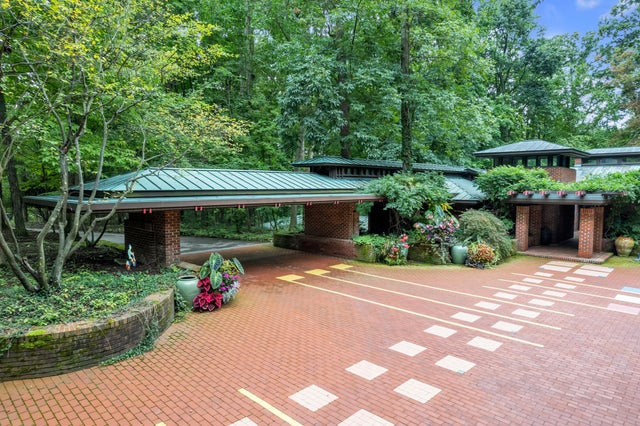





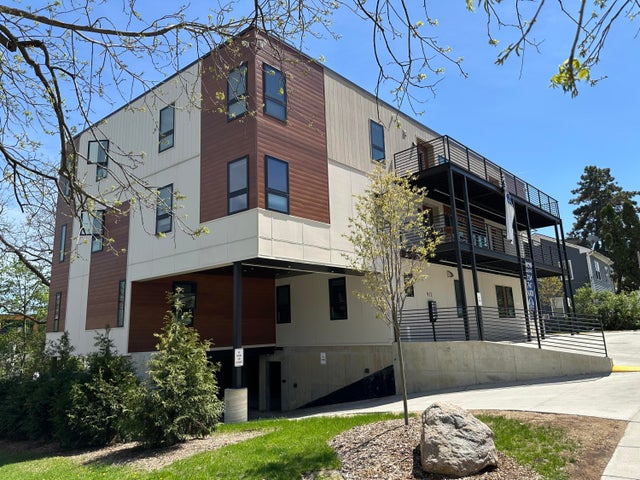



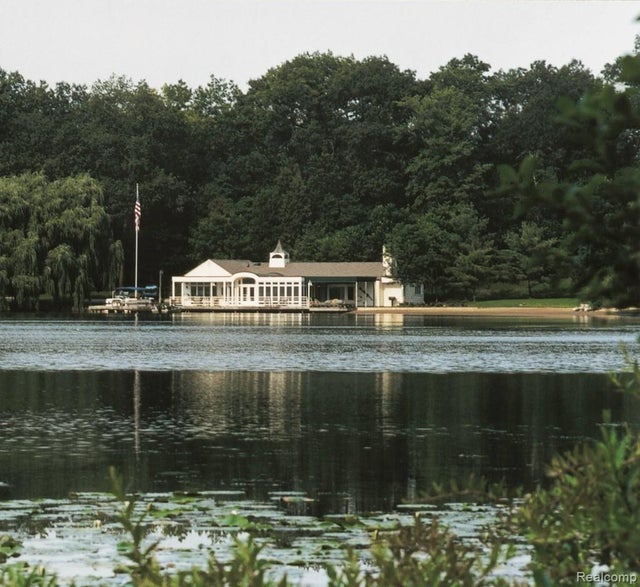

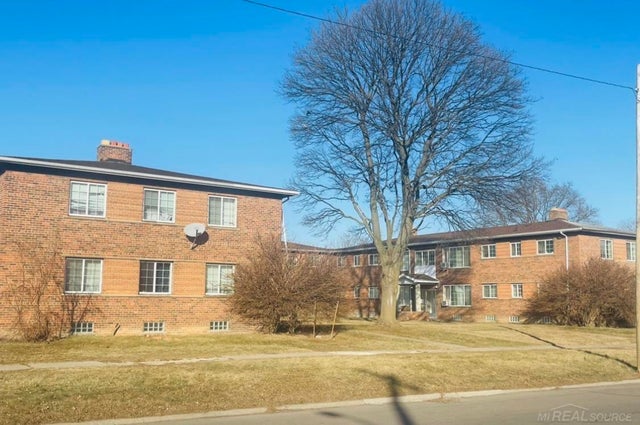








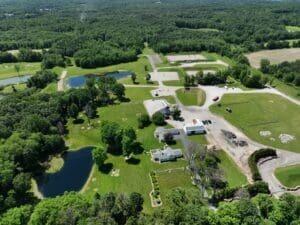





















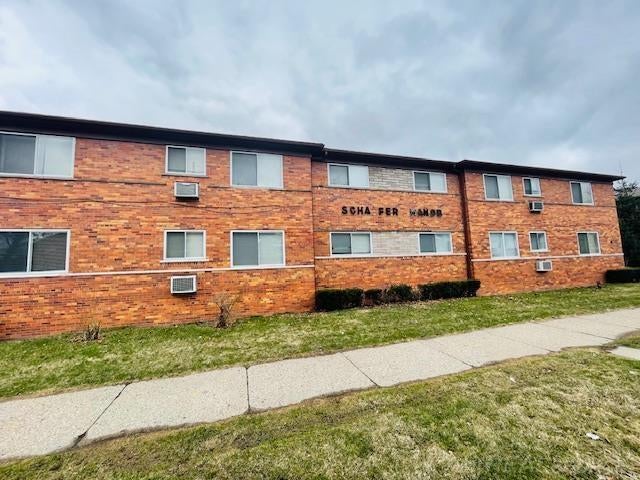


Leave A Comment